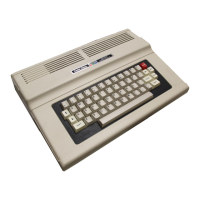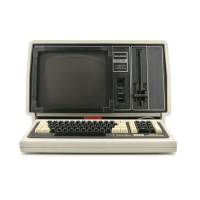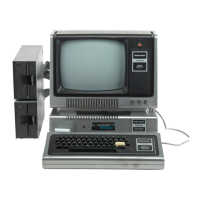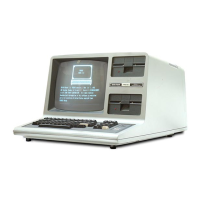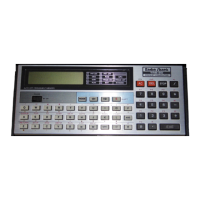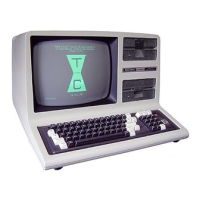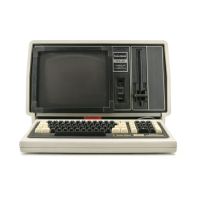The
counters
used
in
the
divider chain are
74LS93's.
This family
of
TTL
ripple-counters
sometimes shows a multilevel high on
the
data
outputs.
The
wave shape appears
to
have
one
or
more
steps while
the
main pulse
is
high. This
type
of
output
is
satisfactory if
the
steps
do
not
fall below
the
2.4
volt
minimum
logical high
level. Usually,
you
will have a
counter
step
of
about
half a volt
or
so, and
the
lowest step will
never fall below
3.0
volts. This
is
just
a little
tidbit
that
could
side
track
a technician
who
is
not
familiar with
the
'93
counter.
Address
and
Data
Line
Shorts
A
short
in
the
address
or
data
lines
is
about
the
worst
problem
a
Computer
can have.
The
two
Busses go everywhere; and it
only
takes
a small
flake
of
solder
to
kill a system as dead as shoot-
ing
it
would.
If
the
two
busses were rated as
to
which
is
worse
to
have a
short,
the
data bus
would
win. Since
the
data
bus
is
a
two
way
street, everything
attached
to
it
is
tri-stateable.
You
cannot
really separate
two
shorted
lines
from
the
rest, because
they
all look strange. On
the
address bus,
there
are no tri-state devices
(there are buffers used,
but
they
are never tri-
stated
during normal
operation).
Address line
shorts
are
rather
straightforward.
Try
finding
two
signals with tri-state
type
volt-
age levels. (The CPU address
buffer
is
not
tri-
stated
unless
the
"Test"
input
is
grounded
at
the
expansion
connector.)
After
finding
the
two
bad
lines, you can follow
one
around
the
Board
until
you
find an area where
the
two
runs
come
close
to
each
other.
If you still
can't
find
the
short,
try
cutting
one
run until
you've
isolated
the
area where a
short
exists.
Be
sure you repair
each
cut
after
each check.
Don't
leave
them
for
later,
you
might forget where
you
made
the
cuts
and
create
even
more
problems.
80
Data line
shorts
need
to
be isolated
in
the
same
way,
once
you
find
the
two
bad lines. Finding
the
bad lines
is
another
matter
altogether.
The
best way
to
search
out
shorted
data
lines
is
to
disable
the
Data Bus.
Short
the
TEST* signal
to
ground.
All
data
and
address line buffers will
tri-state. If
you
suspect a gate
short
to
data
line,
look
at
all
data
lines. You are looking for
one
that
is
not
floating. With a
short
between
data
lines, you will need
to
pull up a line
to
5 volts
with a
4.7K
resistor and
check
on
the
other
lines
for
a high, instead
of
a floating
condition.
If you
spend
a
lot
of
time
hunting bus shorts,
you
might
want
to
build
yourself
a little
test
board.
The
board
could
contain
pull
up
resis-
tors,
LEDs and switches. You can
connect
this
type
of
fixture
to
the
expansion
connector
and
rapidly
determine
if
you
have a bus
short
or
not
by
switching ground
to
each line
and
see if
any
other
lights go on. It's
better
than
trying
to
grow
a
third
arm so you can handle
the
pull
up
resis-
tor,
the
scope
probe
and
the
shorting lead all
at
the
same time!
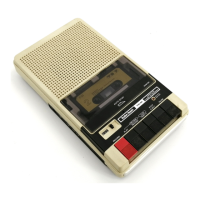
